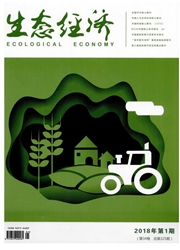

 中文摘要:
中文摘要:
以长江中下游湖北、湖南、江西、安徽、江苏、浙江六省和上海市为研究区域,运用主成分分析法分析该区农业干旱脆弱性的影响因素,并通过聚类分析的方法来反映长江中下游干旱脆弱性的空间变化。结果表明:人均耕地面积、农民工资性收入所占比例、第一产业比重、森林覆盖率、地表水资源量等经济因素是影响长江中下游六省一市干旱脆弱性的主要因素,其对干旱脆弱性的贡献率达54.4%;自然因素和社会因素的贡献率次之,分别为21%和10.8%;进一步将长江中下游六省一市根据脆弱性差异聚成三类。提升农业产业化水平、增加森林覆盖率、加强农田水利基础设施建设等可有效提升农业抗旱整体能力,同时政府的农业抗旱政策也应当做到差异化、因地制宜。
 英文摘要:
英文摘要:
The study areas in the paper were six provinces and one city in the middle and lower reaches of the Yangtze River including Hubei, Hunan, Jiangxi, Anhui, Jiangsu, Zhejiang and Shanghai. Principal component analysis was used to analyze the influencing factors of agricultural drought disaster vulnerability and cluster analysis was used to reflect its spatial variation. Results show that some economic factors such as the arable land area per capita, the proportion of peasant wage income, the proportion of the primary industry, forest coverage rate and surface water resources amount are the main factors affecting the drought vulnerability of the target areas. The contribution rate of economic factors to drought vulnerability is 54.4%, the natural and social factors account for 21% and 10.8%, respectively. Furthermore, the seven areas are clustered into 3 types according to their drought vulnerability. The overall agricultural drought-resistant capability could be improved effectively by enhancing the agricultural industrialization, increasing forest coverage and strengthening the infrastructure of irrigation and water conservancy construction. Government should also adjust agricultural drought-resistant policies according to local conditions.
 同期刊论文项目
同期刊论文项目
 同项目期刊论文
同项目期刊论文
 期刊信息
期刊信息
